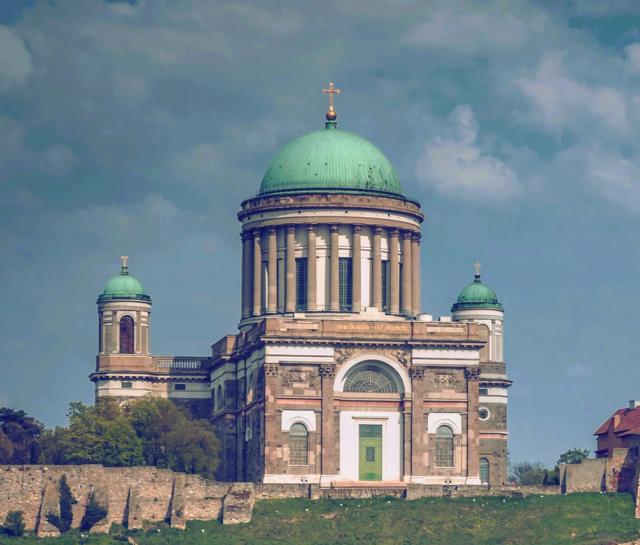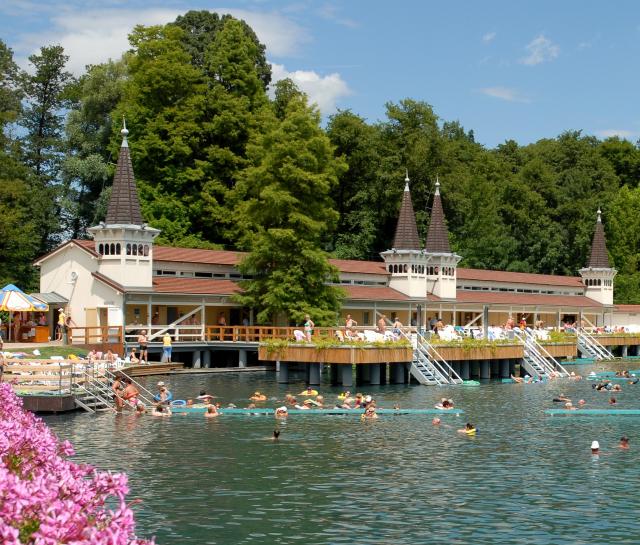Wine and Gastronomy in Hungary
Gastronomy
We Hungarians are famed for our hospitality. Our culinary culture and customs, the development of our cuisine, our professional knowledge and enhanced enjoyment of foods and drinks and our culinary art betrays much about our nation. Hungarian viticulture has a centuries-old past and Hungarian gastronomy has a special character, in which distinctive elements brought from the east blend with the delicate elegance of French and Italian cuisine. Paprika powder, onions from Makó, the world’s most flavoursome green paprikas, goose liver, pálinka and the more than one thousand types of wine from 22 wine regions are truly Hungarian. Hungarian wines and cuisine are marked by international and prize-winning chefs at the culinary Oscars. Come and convince yourself in person; taste what it means to be Hungarian.
Wine
The thousand-year past of Hungarian vine-growing and wine-making is founded upon ancient eastern traditions brought by the Magyars themselves, surviving Roman viticultural know-how in Pannonia, the Benedictine and other monastic orders and settlers from Italy and Burgundy, later to be perfectly adopted by Hungarian viticulturists. The great variety of Hungarian wines, which were already rivalling those of Italy in Roman times, is thanks to a unique climate and extremely varied soils. It is no wonder that among all the languages spoken in Europe, only the Greeks and the Hungarians have a word of their own for wine.
While the sons of other nations drink fermented cereal, that is, ale, we Hungarians prefer to imbibe the nectar of grapes. Hungary is among the world’s top 25 wine-making countries, so it is no accident that it is a wine-drinking nation. Our 22 wine regions differ widely in size, location and the character of their wines, but in each one can find those types and traditions which over long centuries have determined production. Otherwise wine is enjoying a renaissance in Hungary: 27 wine trail societies operate in the 22 regions. The wine trail produces a formal, organized itinerary within the wine region, bringing together production, culture, architecture and tourist services built upon tradition, with the local quality wines at the hub, complemented of course by the specialties of the local cuisine, for food and drink together - that is, the harmony of flavours – is indispensable for the connoisseur.
It is thanks to generations of wine-makers that such unique wines have been created as the Bull’s Blood of Eger and Szekszárd, and Tokay’s aszú, hailed by connoisseurs and professionals alike as the king of wines and wine of kings. Come to Hungary and discover what it’s like to be king and drink a wine fit for a king!
Pálinka
Pálinka is a traditional part of Hungarian hospitality, so no visitor of Hungary should even dream of escaping a tot! Mind you, whoever has heard of the Hungarians’ “firewater,” or whose friends have already visited Hungary and spoken about it, will not be trying to avoid but rather to seek out the experience; to try out this most Hungarian of drinks, pálinka. The name pálinka can only be used for those products distilled from 100% fruit – that is, without added alcohol or artificial aromas – and with an alcohol content of at least 37.5%.
Different distilled drinks are consumed all over the world, and their constituents vary greatly according to region, country, climate and natural conditions. Until the 16th century spirits were used as medications, as is borne out by the European term aqua vitae (water of life) and its variants in different languages.
Pálinka should never be chilled, for its bouquet can only be fully appreciated at hand temperature. It’s worth carrying out the “dry test”: After downing the first glass, put it aside for five to ten minutes, and then inhale into the second. If you are drinking real pálinka you will only be able to detect the aroma of pure fruit. The “bite” exercised in wine-tasting is also important, for the taste and bouquet of pálinka truly appears in the corners of the mouth, under the tongue and around the taste buds.
Pálinka is one of our national treasures. It should be respected and never over-indulged. After all, the twice-two-centilitres which is the recommended adult daily dose works just as well as an appetiser as to stave of the cold in winter or the heat of summer.
Request for proposal
Wine and Gastronomy in Hungary
Gastronomy
We Hungarians are famed for our hospitality. Our culinary culture and customs, the development of our cuisine, our professional knowledge and enhanced enjoyment of foods and drinks and our culinary art betrays much about our nation. Hungarian viticulture has a centuries-old past and Hungarian gastronomy has a special character, in which distinctive elements brought from the east blend with the delicate elegance of French and Italian cuisine. Paprika powder, onions from Makó, the world’s most flavoursome green paprikas, goose liver, pálinka and the more than one thousand types of wine from 22 wine regions are truly Hungarian. Hungarian wines and cuisine are marked by international and prize-winning chefs at the culinary Oscars. Come and convince yourself in person; taste what it means to be Hungarian.
Wine
The thousand-year past of Hungarian vine-growing and wine-making is founded upon ancient eastern traditions brought by the Magyars themselves, surviving Roman viticultural know-how in Pannonia, the Benedictine and other monastic orders and settlers from Italy and Burgundy, later to be perfectly adopted by Hungarian viticulturists. The great variety of Hungarian wines, which were already rivalling those of Italy in Roman times, is thanks to a unique climate and extremely varied soils. It is no wonder that among all the languages spoken in Europe, only the Greeks and the Hungarians have a word of their own for wine.
While the sons of other nations drink fermented cereal, that is, ale, we Hungarians prefer to imbibe the nectar of grapes. Hungary is among the world’s top 25 wine-making countries, so it is no accident that it is a wine-drinking nation. Our 22 wine regions differ widely in size, location and the character of their wines, but in each one can find those types and traditions which over long centuries have determined production. Otherwise wine is enjoying a renaissance in Hungary: 27 wine trail societies operate in the 22 regions. The wine trail produces a formal, organized itinerary within the wine region, bringing together production, culture, architecture and tourist services built upon tradition, with the local quality wines at the hub, complemented of course by the specialties of the local cuisine, for food and drink together - that is, the harmony of flavours – is indispensable for the connoisseur.
It is thanks to generations of wine-makers that such unique wines have been created as the Bull’s Blood of Eger and Szekszárd, and Tokay’s aszú, hailed by connoisseurs and professionals alike as the king of wines and wine of kings. Come to Hungary and discover what it’s like to be king and drink a wine fit for a king!
Pálinka
Pálinka is a traditional part of Hungarian hospitality, so no visitor of Hungary should even dream of escaping a tot! Mind you, whoever has heard of the Hungarians’ “firewater,” or whose friends have already visited Hungary and spoken about it, will not be trying to avoid but rather to seek out the experience; to try out this most Hungarian of drinks, pálinka. The name pálinka can only be used for those products distilled from 100% fruit – that is, without added alcohol or artificial aromas – and with an alcohol content of at least 37.5%.
Different distilled drinks are consumed all over the world, and their constituents vary greatly according to region, country, climate and natural conditions. Until the 16th century spirits were used as medications, as is borne out by the European term aqua vitae (water of life) and its variants in different languages.
Pálinka should never be chilled, for its bouquet can only be fully appreciated at hand temperature. It’s worth carrying out the “dry test”: After downing the first glass, put it aside for five to ten minutes, and then inhale into the second. If you are drinking real pálinka you will only be able to detect the aroma of pure fruit. The “bite” exercised in wine-tasting is also important, for the taste and bouquet of pálinka truly appears in the corners of the mouth, under the tongue and around the taste buds.
Pálinka is one of our national treasures. It should be respected and never over-indulged. After all, the twice-two-centilitres which is the recommended adult daily dose works just as well as an appetiser as to stave of the cold in winter or the heat of summer.
Request for proposal














